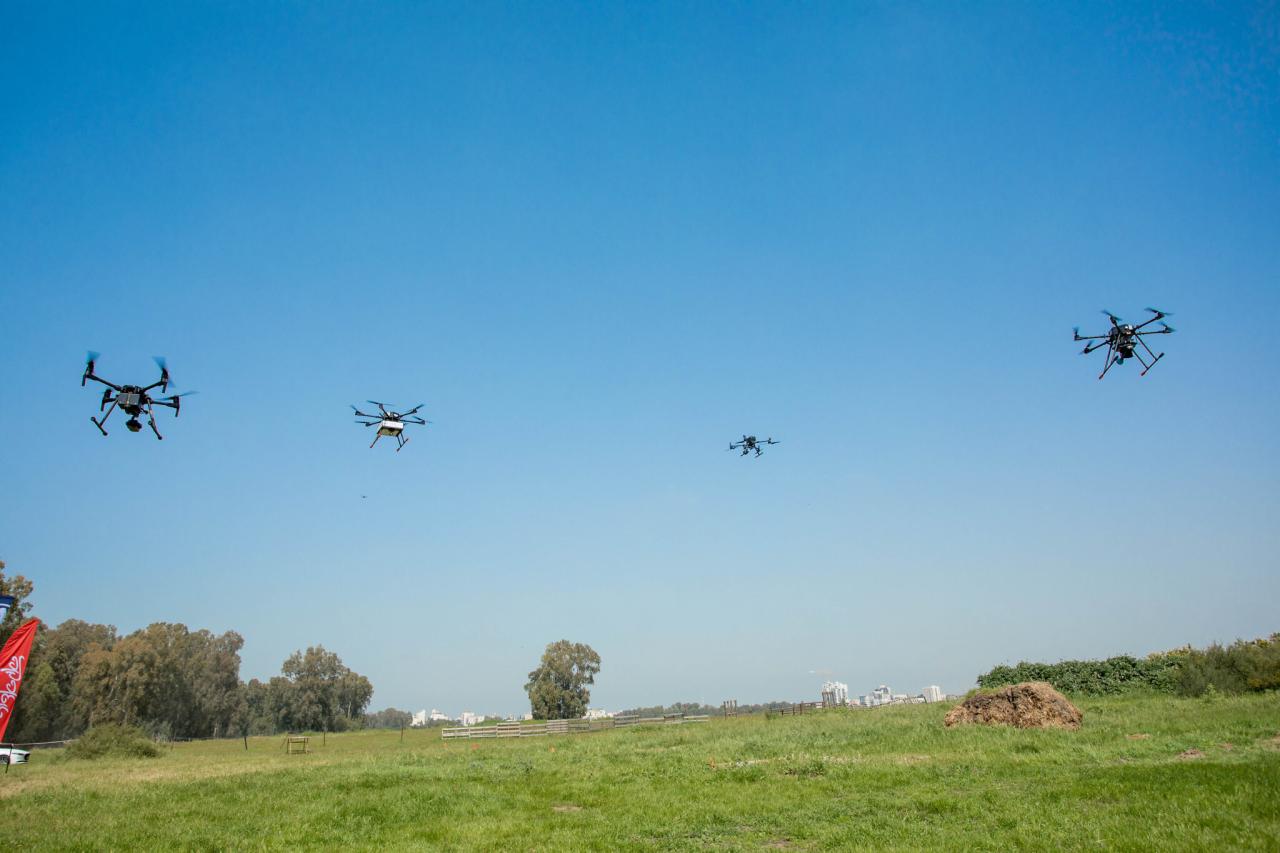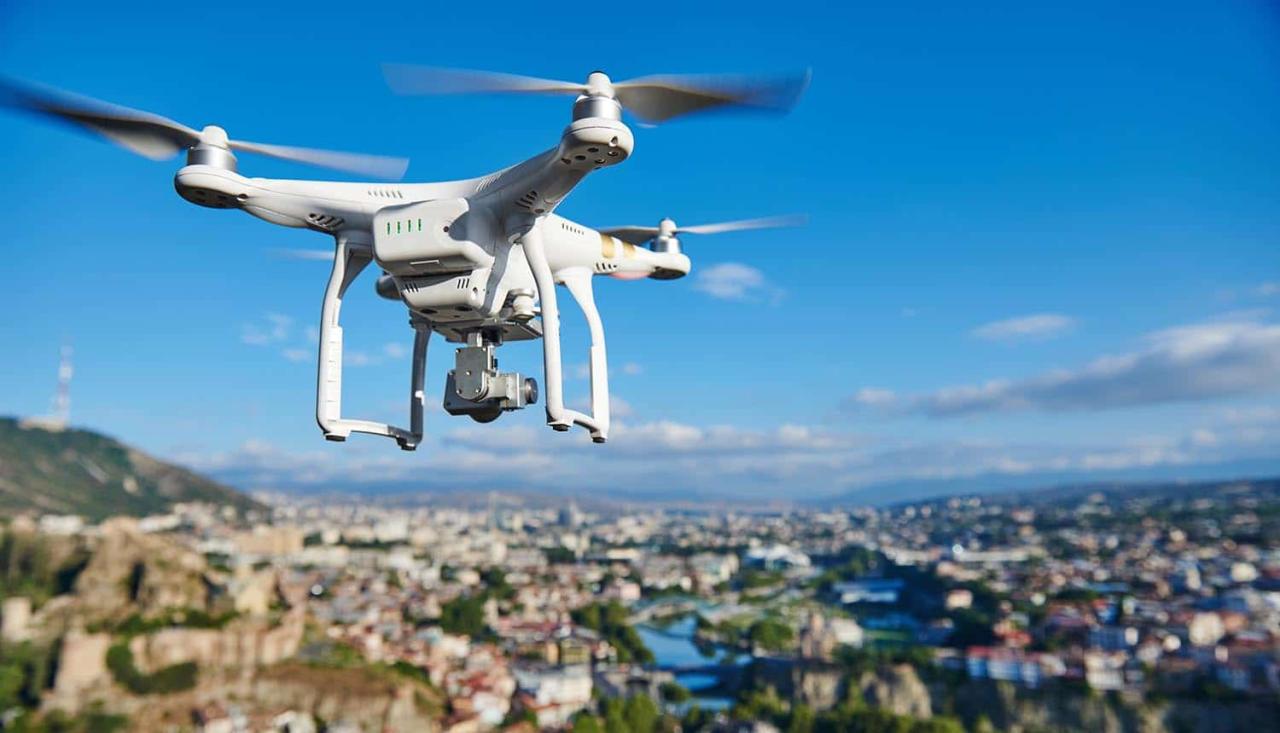Sky elements drones represent a fascinating intersection of technology and atmospheric science. These unmanned aerial vehicles (UAVs) operate within the complex and ever-changing conditions of the atmosphere, facing challenges ranging from mild breezes to severe storms. Understanding how drones interact with wind, temperature, pressure, and precipitation is crucial for safe and effective operation, and this exploration delves into the intricacies of this dynamic relationship.
This examination covers the technological innovations enabling drone operation in diverse atmospheric conditions, from advanced sensor systems to sophisticated data processing techniques. We will explore the various applications of sky elements drones across sectors like agriculture, meteorology, and surveying, showcasing successful case studies and highlighting both the advantages and limitations. Finally, we will discuss safety regulations, future trends, and the potential of AI in enhancing drone autonomy and safety in challenging weather.
Sky Elements Drones: Navigating the Atmospheric Frontier

The burgeoning field of drone technology is rapidly expanding its capabilities, pushing the boundaries of what’s possible in diverse atmospheric conditions. Understanding the intricate interplay between drones and “sky elements” – the various atmospheric components – is crucial for safe, efficient, and effective operation. This exploration delves into the key aspects of drone technology within the context of atmospheric challenges and opportunities.
Sky Elements: Defining the Scope
Sky elements, in the context of drone technology, encompass all atmospheric factors influencing drone performance and data acquisition. These include wind speed and direction, temperature variations, air pressure fluctuations, humidity levels, precipitation (rain, snow, hail), and visibility (fog, dust, smoke). These elements collectively create a dynamic and often unpredictable environment that drones must navigate.
Wind, for instance, directly impacts drone stability and flight time, exerting significant forces on the airframe. Temperature affects battery performance and the density of air, influencing lift and propulsion. Air pressure variations can lead to altitude discrepancies and affect sensor readings. Precipitation can impair sensor functionality and increase the risk of mechanical failure. Reduced visibility due to fog or dust severely limits the operational range and safety of drone flights.
Different weather patterns have profound impacts on drone operations. For example, thunderstorms pose a significant risk due to lightning strikes and strong updrafts/downdrafts. High winds can lead to loss of control, while heavy precipitation can damage sensitive equipment. Fog significantly reduces visibility, hindering navigation and data acquisition.
| Weather Condition | Impact on Flight Time | Impact on Data Acquisition | Safety Concerns |
|---|---|---|---|
| Strong Winds (above 25 mph) | Reduced flight time, increased energy consumption | Reduced accuracy, image blur | Risk of loss of control, collision |
| Heavy Rain/Snow | Reduced flight time, potential for water damage | Significant reduction in image quality, sensor malfunction | Risk of equipment damage, electrical hazards |
| Fog/Low Visibility | Reduced operational range, increased risk of collision | Limited or no data acquisition | High risk of collision, disorientation |
| High Temperatures | Reduced flight time due to battery degradation | Potential for sensor overheating | Risk of battery failure |
Drone Technology and Sky Elements Interaction

Drone sensors, such as lidar, radar, and cameras, interact directly with atmospheric elements. Lidar utilizes laser pulses to measure distance and create 3D models, but atmospheric particles (dust, fog) can scatter the laser signals, reducing accuracy. Radar uses radio waves to detect objects, but atmospheric interference can affect signal strength and clarity. Cameras are affected by atmospheric conditions such as haze, fog, and rain, which reduce visibility and image quality.
The increasing sophistication of sky elements drones, particularly in their navigation and payload capabilities, raises important questions about their potential misuse. Recent events, such as the kazan drone attack , highlight the urgent need for robust counter-drone technologies and stricter regulations. Further research into both the defensive and offensive applications of sky elements drones is therefore crucial for maintaining national security.
Atmospheric interference presents significant challenges to data acquisition and image quality. Scattering, absorption, and refraction of light and radio waves by atmospheric particles and gases can lead to inaccurate measurements, distorted images, and reduced sensor sensitivity. These issues require sophisticated mitigation techniques.
Sky Elements Drones specializes in crafting breathtaking aerial displays, utilizing cutting-edge technology for unparalleled precision. However, even the most sophisticated systems can face unforeseen challenges, as highlighted by a recent incident; you can read more about a significant drone show accident that impacted the industry. Understanding such occurrences helps Sky Elements Drones refine safety protocols and further enhance the reliability of their drone shows.
Innovative technologies are being developed to address these challenges. Advanced image processing algorithms can correct for atmospheric distortion and enhance image clarity. Specialized sensors with improved sensitivity and noise reduction capabilities are being designed. Real-time weather data integration allows for informed decision-making and adaptive flight planning.
The data processing pipeline involves several steps: sensor data acquisition, atmospheric correction (accounting for factors like scattering and refraction), data filtering (removing noise and artifacts), data fusion (combining data from multiple sensors), and final output (maps, models, reports).
Applications of Sky Element Drones
Drones equipped to handle varied atmospheric conditions are utilized across numerous sectors. Agriculture employs drones for crop monitoring, precision spraying, and yield estimation. Meteorology utilizes drones for atmospheric data collection, weather forecasting, and storm tracking. Surveying and mapping leverage drones for terrain modeling, infrastructure inspection, and environmental monitoring.
Case studies demonstrate successful drone deployments in challenging environments. For instance, drones have been used to monitor volcanic activity in hazardous conditions, assess damage after natural disasters, and map inaccessible terrains. In agriculture, drones have enabled precise application of pesticides and fertilizers, optimizing resource use and minimizing environmental impact.
The use of drones varies across applications, with specific sky element considerations. Agricultural drones need to operate in diverse weather conditions, requiring robust designs and advanced sensor technologies. Meteorological drones require high-altitude capabilities and specialized sensors for accurate atmospheric measurements. Surveying drones need precision positioning and imaging capabilities, regardless of weather conditions.
- Advantages of using drones in different sky conditions: Improved data acquisition in previously inaccessible areas, cost-effectiveness, faster data collection, enhanced safety for human operators in hazardous environments.
- Disadvantages of using drones in different sky conditions: Limited flight time in adverse weather, potential for equipment damage, reduced data quality in poor visibility, safety risks associated with challenging weather.
Safety and Regulatory Aspects, Sky elements drones
Stringent safety protocols and regulations govern drone operations, particularly in challenging atmospheric conditions. Operators must adhere to guidelines regarding wind speed limits, visibility requirements, and altitude restrictions. Risk assessments are crucial, considering factors like weather forecasts, potential hazards, and emergency procedures.
Adverse weather significantly impacts drone safety. High winds, heavy precipitation, and low visibility increase the risk of accidents and equipment damage. Loss of control, collisions with obstacles, and battery failures are major concerns. Proper pre-flight checks and contingency planning are essential.
Risk assessment involves identifying potential hazards, evaluating their likelihood and severity, and implementing mitigation strategies. This includes analyzing weather forecasts, assessing the impact of various atmospheric conditions on drone performance, and developing contingency plans for unexpected events.
| Weather Condition | Safety Measures | Operational Restrictions | Emergency Procedures |
|---|---|---|---|
| Light Winds (below 10 mph) | Standard pre-flight checks, visual observation | None | Standard emergency landing procedures |
| Moderate Winds (10-25 mph) | Enhanced pre-flight checks, experienced pilot | Reduced flight time, lower altitude | Rapid descent, emergency landing |
| Strong Winds (above 25 mph) | Postpone flight | No operation | Return to base immediately |
| Heavy Precipitation | Postpone flight | No operation | Seek shelter, assess damage |
Future Trends and Innovations

Emerging technologies are poised to revolutionize drone performance in challenging atmospheric conditions. Advanced sensor fusion techniques will improve data accuracy and reliability. AI-powered autonomous navigation systems will enhance situational awareness and decision-making in unpredictable weather. Improved battery technology will extend flight times, enabling longer missions in demanding environments.
AI and machine learning are crucial for enhancing drone autonomy and safety. AI algorithms can analyze real-time weather data, predict potential hazards, and adapt flight plans accordingly. Machine learning models can be trained to recognize and avoid obstacles in low visibility conditions. This level of autonomy is crucial for expanding the operational envelope of drones in diverse weather.
The future of drone technology in varied sky elements points towards increased autonomy, enhanced safety features, and improved data acquisition capabilities. Drones will become more resilient to adverse weather conditions, enabling a wider range of applications and greater operational efficiency.
A future drone designed for extreme weather conditions might incorporate features such as reinforced airframes, advanced weather sensors, AI-powered obstacle avoidance, and self-healing capabilities. The drone could be equipped with redundant systems to ensure continued operation even in the event of component failure. Its propulsion system might be designed to withstand high winds and maintain stability in turbulent conditions.
Advanced materials and aerodynamic design would minimize the impact of adverse weather.
The integration of drones into atmospheric data collection and various applications presents a remarkable opportunity to enhance our understanding of weather patterns, optimize agricultural practices, and improve the efficiency of numerous industries. While challenges remain, the ongoing development of innovative technologies and robust safety protocols continues to expand the operational capabilities of sky elements drones. The future holds exciting possibilities, with AI and machine learning poised to revolutionize drone autonomy and safety, leading to even more sophisticated and reliable operations in increasingly challenging atmospheric environments.
Essential FAQs: Sky Elements Drones
What types of sensors are commonly used on sky elements drones?
Common sensors include LiDAR, radar, high-resolution cameras, and various environmental sensors measuring temperature, humidity, and pressure.
How do regulations vary for drone operation in different countries?
Drone regulations vary significantly by country, often depending on factors like airspace restrictions, operational altitude, and the type of data collected. It is crucial to research and comply with local regulations before operating any drone.
What are the major safety concerns when operating drones in adverse weather?
Sky elements drones, with their advanced capabilities, are transforming aerial displays. To witness truly spectacular drone choreography, consider checking out the impressive visuals at the florida drone show ; it showcases the innovative potential of these unmanned aerial vehicles. The future of sky elements drones looks bright, promising even more awe-inspiring performances.
Major safety concerns include loss of control due to strong winds, reduced visibility impacting navigation, and potential damage to the drone from rain, hail, or lightning.
What is the future of AI in sky elements drones?
AI is expected to play a crucial role in enhancing drone autonomy, enabling them to make real-time decisions based on changing weather conditions, improving navigation and safety, and optimizing data collection strategies.
